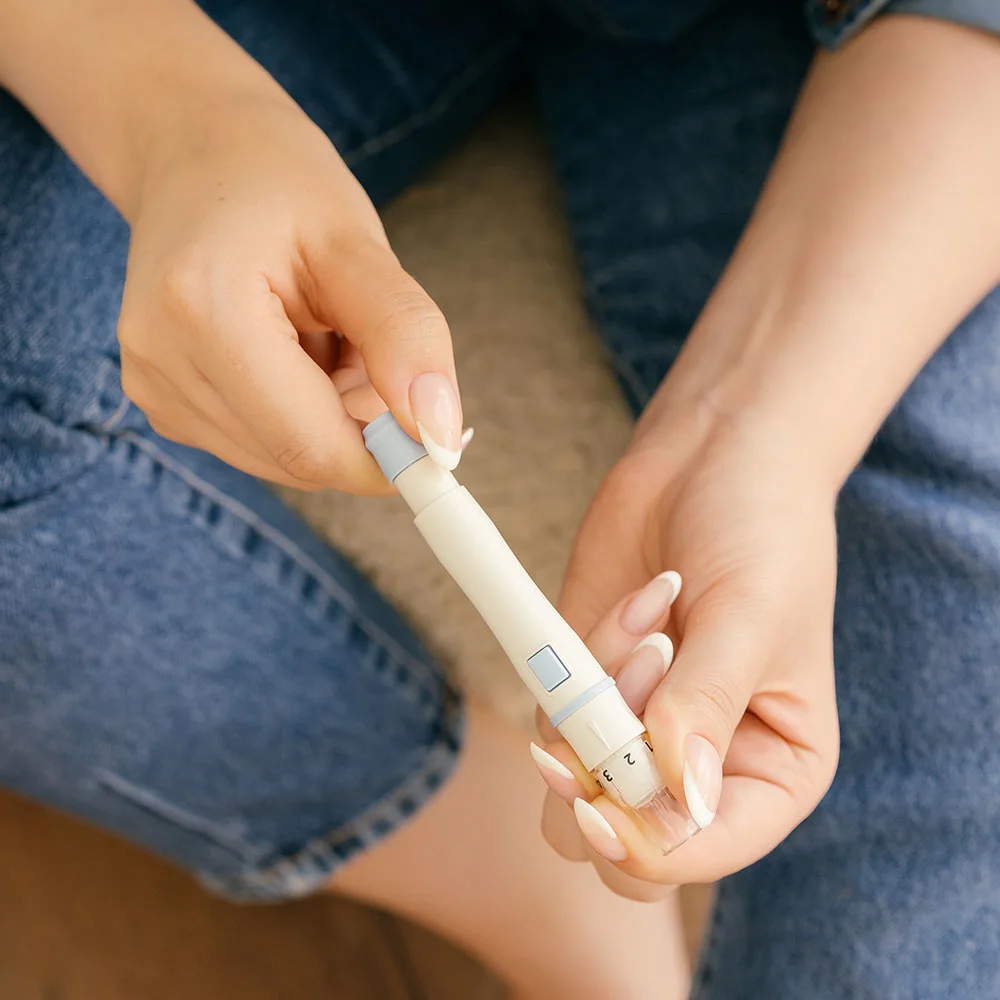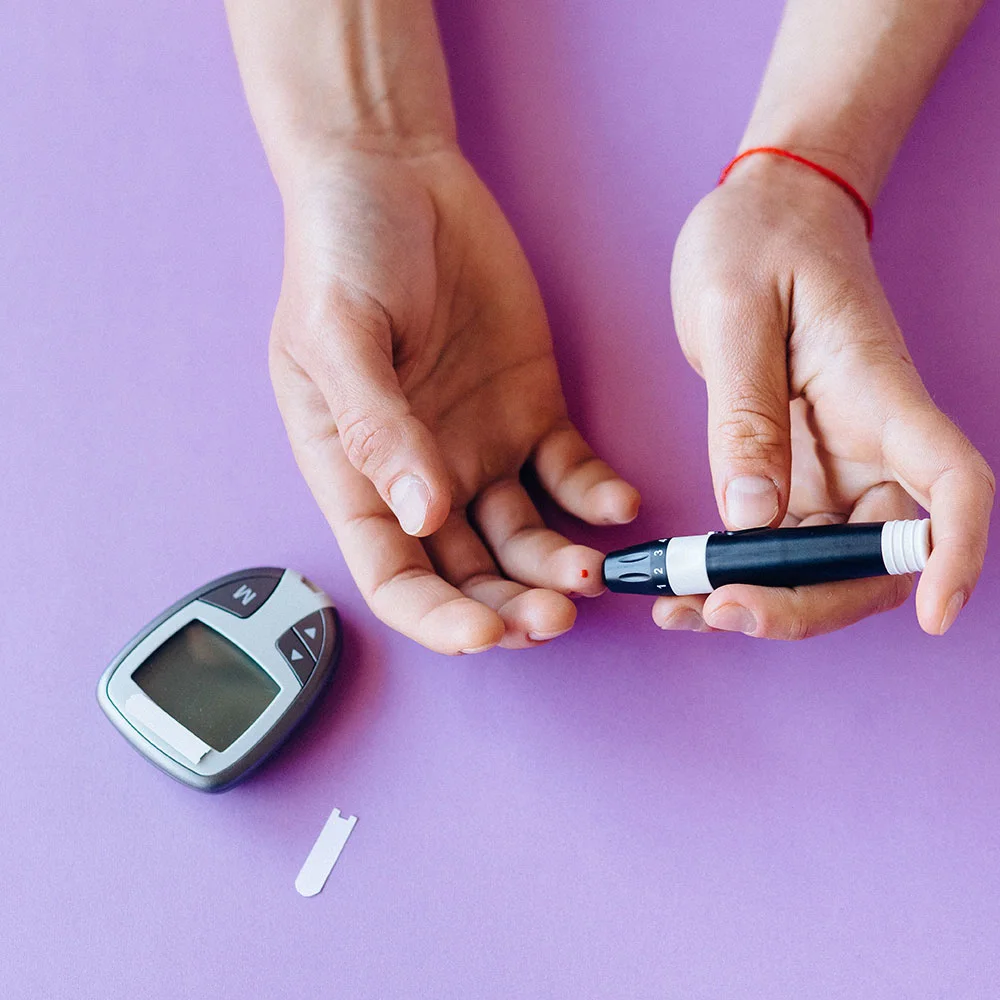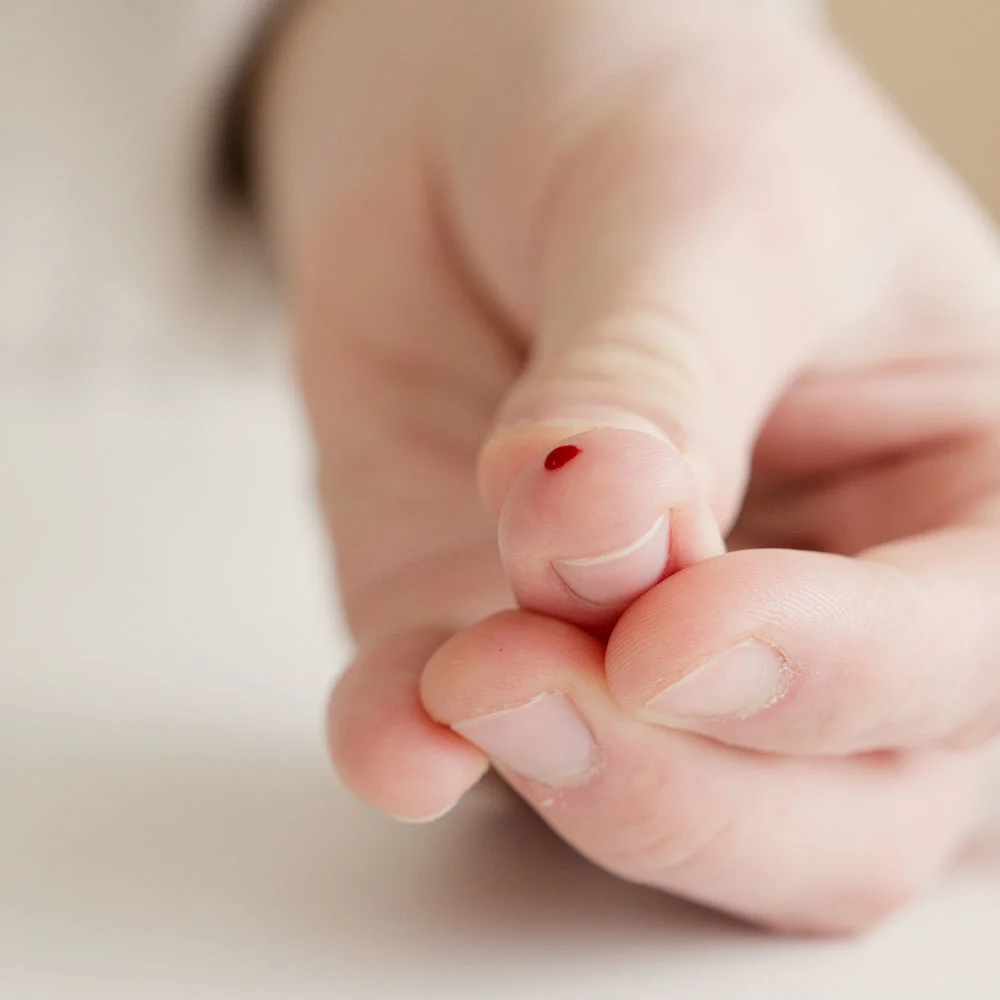Here's what we'll cover
Here's what we'll cover
Here's what we'll cover
A 2007 article in the International Journal of Health Sciences asked the question, "Is diabetes becoming the biggest epidemic of the 21st century?" The disease, characterized by uncontrolled blood sugar levels and a host of negative long-term effects, has certainly become a cause for concern (Tabish, 2007).
It is estimated that 425 million people in the world have diabetes, with 30.3 million of those living in the United States (UpToDate, 2019a; CDC, 2017). With that being nearly 1 in 10 Americans, chances are you know at least one person living with diabetes. What is more concerning, the high levels of childhood obesity indicate that rates of diabetes may continue to go up, truly becoming the epidemic of which the 2007 article cautioned. An increase in type 2 diabetes that parallels the obesity epidemic is already being seen in children (UpToDate, 2019b). In the early 1990s, only 3% of childhood diabetes cases were type 2. By 2003, that number rose to 20-50%.
Approximately 90-95% of people with diabetes have type 2 diabetes mellitus, sometimes abbreviated as T2DM. This is distinguished from type 1 diabetes mellitus (T1DM), which is an autoimmune disease, and gestational diabetes, which is brought on by pregnancy. Additionally, T2DM should not be confused with diabetes insipidus. Diabetes insipidus is a rare disease that causes extreme thirst and frequent urination as a result of the body's inability to regulate fluid and is unrelated to T2DM.
What is type 2 diabetes?
T2DM occurs when the body becomes less sensitive to a hormone called insulin. Insulin is a hormone that is released from the pancreas in response to elevated blood sugar levels (also called blood glucose levels). Insulin has two primary effects. It acts on receptors in the body to help glucose move into fat and muscle cells, and it acts on receptors in the liver to help store extra glucose as glycogen for later use. These two actions together help lower blood sugar into the normal range. In an individual without diabetes, normal blood sugars levels are 70-99 mg/dL when fasting (not eating or drinking for at least eight hours) and <140 mg/dL two hours after eating.
In T2DM, the body is insulin resistant, meaning that the tissues no longer respond to insulin as well. At first, the pancreas ramps up its insulin production to compensate for the loss of insulin sensitivity. Sometimes, this increased amount of insulin in the blood is detected by healthcare providers and is referred to as hyperinsulinemia.
For some time, the pancreas might be able to compensate for insulin resistance with hyperinsulinemia. However, as the pancreas continues to work in overdrive, it eventually becomes unable to keep up with the body's needs. It may also start to "burn out" and may have trouble making insulin. When the pancreas is no longer able to produce enough insulin to support the needs of the body, blood sugar becomes uncontrolled, and you develop T2DM.
How is type 2 diabetes different than type 1 diabetes?
T2DM and T1DM are both diseases where there is a problem with the hormone insulin. Both diseases clinically look similar and have many of the same symptoms and long-term effects. However, the underlying causes, risk factors, and some of the treatments for each disease are different.
As mentioned, T2DM is an issue with how the body responds to the hormone insulin. The pancreas is still making insulin and secreting it into the bloodstream (at least, at first) but the tissues of the body are not as responsive to its effects. On the other hand, in T1DM, there is an issue with the actual production of insulin. T1DM is an autoimmune disease, which means the body attacks itself. In T1DM, antibodies target and destroy pancreatic beta cells, which are the cells that produce insulin. As a result, the pancreas is unable to make insulin, it does not secrete it into the bloodstream, and blood sugar levels are uncontrolled. T1DM is often (but not always) diagnosed in childhood and requires insulin as a treatment, which is not always the case with T2DM.
What are the risk factors for type 2 diabetes?
There are many risk factors for developing T2DM which are generally broken down into two groups: the things you can change, and the things you cannot change.
Things you cannot change
Age: Being over the age of 45 is a risk factor for T2DM, however people younger than this still may acquire the disease.
Race: Non-Hispanic whites have the lowest risk of developing T2DM. From 2013-2015 the prevalence of diabetes in specific populations in the United States was as follows (UpToDate, 2019a):
7.4% in non-Hispanic whites
8.0% in Asian Americans
12.1% in Hispanics
12.7% in non-Hispanic blacks
15.1% in Native Americans/Alaska Natives
Family history and genetics: People with a parent, sibling, or child who has T2DM are two to three times more likely to develop T2DM themselves. And if both of your parents have T2DM, you are five to six times more likely to have the disease. This indicates that T2DM has a genetic component, with multiple genes likely playing a role. Researchers have identified some of these genes. However, families also tend to have similar lifestyles in terms of eating habits, level of activity, and the presence of obesity (which in itself can be partially mediated by genetics). As a result, it is difficult to determine to what degree T2DM is genetic or brought on by these other factors.
History of certain medical conditions: Having a medical history of acanthosis nigricans (darkening of the armpits and neck), gestational diabetes (diabetes brought on by pregnancy), hypertension (high blood pressure), polycystic ovary syndrome (also called PCOS), or prediabetes means you are more at risk of developing T2DM.
However, these differences may be due to other factors, such as access to healthcare and available diet.
Things you can change
Weight: Being overweight or obese is one of the main risk factors for T2DM. This induces insulin resistance in the body, which in turn may lead to T2DM. More specifically than being overweight or obese is the distribution of fat in the body. People with more central obesity, which can be measured by taking the circumference of the waist, are more likely to develop T2DM. Losing weight reduces this risk.
Diet: Independent of weight, your food choices can put you at risk of developing T2DM. Diets rich in red meats, processed meats, and sugary beverages are associated with an increased risk of T2DM, while those who eat fruits, nuts, vegetables, and whole grains are at decreased risk.
Exercise: Independent of weight, being sedentary, is a risk factor for developing T2DM. Being more active and regularly engaging in moderate exercise can lower your risk.
Smoking: People who smoke are 30-40% more likely to develop T2DM (CDC, 2018).
What are the causes of type 2 diabetes
T2DM is caused by insulin resistance and the pancreas's inability to keep up with the insulin needs of the body. Many of the risk factors above, including genetics, being overweight, having abdominal fat, and living a sedentary lifestyle contribute to insulin resistance, which in turn develops into T2DM. While obesity is commonly thought of as directly causing T2DM, not all people who are obese develop T2DM, and not all people with T2DM are obese. Exactly why each individual develops T2DM is likely a combination of multiple factors and may be different from person to person.
How can I prevent type 2 diabetes?
T2DM can be prevented by addressing any of the modifiable risk factors above. Eating a diet rich in fruits, nuts, vegetables, and whole grains and cutting out sugary beverages is one way to prevent T2DM. Being more active (at least thirty minutes of moderate exercise at least five times per week) and losing weight are also important steps in preventing diabetes. If you are a smoker, quitting will reduce your risk (Wannamethee, 2001). If you have already been diagnosed with prediabetes, taking a medication known as metformin can help prevent progression to diabetes.
One study has shown that lifestyle interventions, including a ≥7% weight loss and engaging in ≥150 minutes/week of physical activity, can decrease the risk of developing diabetes by 58% (Knowler, 2002).
What are the symptoms of type 2 diabetes?
The symptoms of T2DM are similar to those of T1DM. However, they may appear over a much longer period as the body moves from insulin resistance to prediabetes to diabetes. Because symptoms develop gradually, some people may have T2DM and not even know it. It is estimated that approximately 25% of people who have T2DM are unaware of their condition (ADA, 2018). It's best if it's possible to diagnose T2DM before symptoms even appear, which can be done with screening. Symptoms include:
Increased thirst (polydipsia)
Frequent urination (polyuria)
Extreme hunger (polyphagia)
Lack of energy
Weight loss
Diabetes also leads to complications which can cause additional symptoms, including:
Vision changes
Numbness, tingling, or pain in the extremities
Difficulty healing
Frequent infections
Heart or blood vessel problems
How is type 2 diabetes diagnosed?
A blood glucose level > 126 mg/dL after you have fasted for 8 hours. This level needs to be confirmed more than once. The test is called the fasting plasma glucose test (FPG test).
A blood glucose level of 200 mg/dL taken randomly, in combination with symptoms. The test is called the random plasma glucose test.
A blood glucose level > 200 mg/dL during an oral glucose tolerance test (OGTT), which involves administering a measured dose of glucose by mouth
A hemoglobin A1C (HbA1C) level > 6.5, which is a blood test that gives a reasonable estimate of how well blood sugar levels have been controlled over the prior two to three months (UpToDate, 2018)
How is type 2 diabetes managed? Is there a treatment? Is there a cure?
There is no cure for T2DM. However, there are many things you can do to treat and manage the disease, sometimes even to the point where you no longer need any medications. In general, management of T2DM focuses on three key areas: Lifestyle modifications, treatment with medications, and screening for complications/comorbidities of T2DM.
People with diabetes who are taking insulin or other medications that can lead to low blood sugar, should regularly check their blood sugar level to ensure it is well-controlled. Both high blood sugar (hyperglycemia) and low blood sugar (hypoglycemia) can be dangerous and potentially fatal, so it is important to keep blood sugar levels as close to the normal range as possible. Using a device known as a glucometer and keeping a diary of blood sugar levels is one way to keep track of them and is a good way to share them with your healthcare provider.
How well-controlled diabetes is can be monitored by checking the HbA1c. Traditionally, the target HbA1c for people with diabetes is stated to be <7.0. However, the American Diabetes Association recognizes that each person may have their own target based on individual factors. A target level of <7.5, <8.0 or <8.5 may also be appropriate, especially in those who are elderly. Strict glucose control should always be balanced against the risk of hypoglycemia, which can be dangerous and even life-threatening.
Lifestyle modifications
Lifestyle changes for people with diabetes are focused on eating healthier, getting more exercise, losing weight, and quitting smoking. Paying attention to the glycemic index or glycemic load of foods can help people with diabetes achieve better glucose control. These values indicate how much a given food is expected to impact blood sugar levels.
Weight loss of 5-10% results in improved sugar and cholesterol control, improved fitness, and improvement in other risk factors for cardiovascular disease. One large study did find that this did not result in a reduced rate of cardiovascular events (Look, 2013). However researchers suggest this finding may have been due to several factors, including the way the study was designed, the possibility that greater sustained weight loss needs to be achieved to see effects, or that there was indeed an effect but only in certain types of people that were tested.
Medications:
Unlike T1DM, T2DM does not necessarily need to be treated with insulin, since the pancreas still makes it on its own. Many different medications have been developed for the treatment of T2DM, which work through a variety of methods.
The main classes of diabetes medications include:
Alpha-glucosidase inhibitors (e.g., acarbose/Precose)
These medications should be taken with food. They block the breakdown of carbohydrates in the intestine, which decreases the rise in blood sugar that occurs after eating.
Biguanides (e.g., metformin/Glucophage)
In the absence of contraindications, metformin is generally the first-line treatment for T2DM, meaning it is the first medication prescribed. It is also sometimes prescribed for those with prediabetes. Metformin works by decreasing the amount of sugar released from the liver into the bloodstream, and it also helps make the body more sensitive to insulin. Metformin may irritate the stomach, so it is recommended that people slowly increase their dose when first starting on metformin.
Bile acid sequestrants (e.g., colesevelam/Welchol)
These are cholesterol-lowering medications. However, they have also been found to reduce blood sugar levels in patients with diabetes.
Dopamine-2 agonists (e.g., bromocriptine/Parlodel)
These medications work on the central nervous system in a way that decreases the production of glucose by the liver and leads to decreased sugar levels after eating.
DPP-4 inhibitors (e.g., sitagliptin/Januvia)
These medications block the DPP-4 enzyme, leading to an increase in hormones called incretins. Incretins stimulate the release of insulin and decrease the release of a hormone called glucagon, which results in lower blood sugar. However, one side effect of these medications is disabling joint pain. The generic names of all DPP-4 inhibitors end in "-gliptin."
GLP-1 receptor agonists (e.g., dulaglutide/Trulicity, exenatide/Byetta, liraglutide/Victoza)
These medications mimic GLP-1, a hormone that causes an increase in insulin and a decrease in glucagon. They are injectable medications. The generic names of all GLP-1 receptor agonists end in "-enatide" or "-glutide."
Meglitinides (e.g., repaglinide/Prandin)
These medications stimulate pancreatic beta cells to release more insulin by acting on channels on the cell membrane. They act similarly to the sulfonylureas but work more quickly. Side effects include weight gain and hypoglycemia. The generic names of all meglitinides end in "-glinide."
Sulfonylureas (e.g., glimepiride/Amaryl, glipizide/Glucotrol, glyburide/DiaBeta)
These medications are widely used in T2DM and work by stimulating pancreatic beta cells to release more insulin by acting on channels on the cell membrane. Side effects include weight gain and hypoglycemia, which may be dangerous and can occur if excess insulin is released.
SGLT2 inhibitors (e.g., canagliflozin/Invokana, empagliflozin/Jardiance)
These are newer medications which work by preventing the reabsorption of glucose in the kidney, in effect lowering blood sugar. They may reduce the risk of certain cardiovascular events but can lead to an increase in urinary tract infections. The generic names of all SGLT2 inhibitors end in "-gliflozin."
Thiazolidinediones (e.g., pioglitazone/Actos, rosiglitazone/Avandia)
These medications make the body more sensitive to insulin by impacting gene regulation and how the body processes fatty acids. These should not be used in those with liver damage or heart failure. The generic names of all thiazolidinediones end in "-glitazone."
As T2DM progresses, people with the disease may eventually require the use of insulin. Insulin comes in a variety of forms that differ in how quickly and for how long they act in the body. Standard insulin injections are one way to receive insulin, although many companies now also provide insulin as more user-friendly injection pens.
What are the complications of type 2 diabetes?
One of the short-term complications of T2DM is a condition called diabetic hyperosmolar hyperglycemic state (HHS). This is a condition where blood sugar levels are markedly elevated (>600 mg/dL), and it can be triggered by an infection or by noncompliance with medications. Symptoms of HHS include increased thirst, frequent urination, fever, drowsiness, confusion, vision changes, and coma. HHS should be treated emergently with intravenous fluids, insulin, and potassium.
It is possible for people with T2DM to develop diabetic ketoacidosis (DKA) as well, which involves high sugar levels and a buildup of ketones (fat byproducts) in the blood. DKA is an emergency and can lead to death. However, DKA is more likely in people who have T1DM rather than T2DM.
Another complication that is not a result of T2DM but could result from treatment of T2DM is having a blood sugar level that is too low (hypoglycemia). Certain diabetes medications, including insulin, meglitinides, and sulfonylureas, can cause hypoglycemia, which may be a medical emergency. Symptoms of hypoglycemia include anxiety, dizziness, fatigue, headache, irregular heartbeat, shakiness, and sweating. Hypoglycemia may also progress to changes in vision, confusion, seizures, loss of consciousness, and death.
Some of the biggest concerns regarding T2DM are the long-term effects it has on the body. T2DM is a risk factor for numerous diseases and can lead to:
Cardiovascular problems
Increased blood sugar damages the insides of large (macrovascular) and small (microvascular) blood vessels. This leads to reduced blood flow in many crucial areas of the body. Additionally, T2DM is a risk factor for atherosclerosis (hardening of plaques in the arteries), heart attack (also called myocardial infarction, or MI), stroke (also called a cerebrovascular accident, or CVA), and other heart diseases.
Eye problems (retinopathy)
Reduced blood flow to the eye leads to diabetic retinopathy, which can cause blindness. Additionally, people with diabetes are at higher risk of developing cataracts and glaucoma.
Kidney problems (nephropathy)
Damage to the small blood vessels in the kidney leads to kidney damage, which can progress to chronic kidney disease and end-stage renal disease requiring hemodialysis (sometimes just called dialysis) or a kidney transplant. According to the Cleveland Clinic, approximately 16,000 kidney transplants are done in the United States per year, and according to the United States Renal Data System, approximately 40% of these were due to diabetes in 2004 (Cleveland Clinic, 2019; Rangel, 2009).
Nerve problems (neuropathy)
Reduced blood flow to the nerves can lead to numbness, tingling, and pain in the extremities. This loss of sensation may begin in the toes and then works its way up as more damage to the nerves occurs.
Amputations
Loss of sensation, problems with circulation, poor wound healing, and increased infections all put people with diabetes at risk for amputations. In fact, diabetes is one of the leading causes of lower-limb amputations in the world.
Screenings
Since people with diabetes are at increased risk of cardiovascular disease, it is important to screen for and treat additional cardiac risk factors. This includes screening and better control of high blood pressure (hypertension) and high cholesterol (hyperlipidemia). Although recommendations frequently change, people with diabetes should typically aim for a target blood pressure of <140/90 or <130/80 and most people with diabetes aged 40-75 should be taking a statin, which is a cholesterol-lowering medication (Bangalore, 2011). For smokers, quitting smokers is also extremely important.
People with diabetes should also receive annual eye exams (known as a fundoscopic exam), annual diabetic foot exams (which test the sensation in the feet and toes), and an annual urine test that looks for small amounts of protein (microalbuminuria) and can detect early kidney damage. It is very important for people with diabetes to stay regularly connected to the healthcare system and to speak to their healthcare provider about any issues that may arise.
DISCLAIMER
If you have any medical questions or concerns, please talk to your healthcare provider. The articles on Health Guide are underpinned by peer-reviewed research and information drawn from medical societies and governmental agencies. However, they are not a substitute for professional medical advice, diagnosis, or treatment.
References
American Diabetes Association (ADA). (2018). Statistics About Diabetes. Retrieved from https://diabetes.org/about-us/statistics/about-diabetes
Bangalore, S., Kumar, S., Lobach, I., & Messerli, F. H. (2011). Blood Pressure Targets in Subjects With Type 2 Diabetes Mellitus/Impaired Fasting Glucose. Circulation , 123 (24), 2799–2810. doi: 10.1161/circulationaha.110.016337. Retrieved from https://www.ncbi.nlm.nih.gov/pubmed/21632497
Centers for Disease Control and Prevention. (July 18, 2017). New CDC report: More than 100 million Americans have diabetes or prediabetes. Retrieved from https://www.cdc.gov/media/releases/2017/p0718-diabetes-report.html
Centers for Disease Control and Prevention. (March 22, 2018). Smoking and Diabetes. Retrieved from https://www.cdc.gov/tobacco/campaign/tips/diseases/diabetes.html
Cleveland Clinic. (November 18, 2019). 4 Facts You Need to Know About Kidney Transplants and Dialysis. Retrieved from https://health.clevelandclinic.org/4-facts-you-need-to-know-about-kidney-transplants-and-dialysis/
Knowler, W. C., Barrett-Connor, E., Fowler, S., Hamman, R., Lachin, J., Walker, E., & Nathan, D. (2002). Reduction in the Incidence of Type 2 Diabetes with Lifestyle Intervention or Metformin. New England Journal of Medicine , 346 (6), 393–403. doi: 10.1056/nejmoa012512. Retrieved from https://www.ncbi.nlm.nih.gov/pubmed/11832527
Rangel, É. B., Sá, J. R. D., Melaragno, C. S., Gonzalez, A. M., Linhares, M. M., Salzedas, A., et al. (2009). Kidney transplant in diabetic patients: modalities, indications and results. Diabetology & Metabolic Syndrome , 1 (1). doi: 10.1186/1758-5996-1-2. Retrieved from https://dmsjournal.biomedcentral.com/articles/10.1186/1758-5996-1-2
Tabish, S. (2007). Is Diabetes Becoming the Biggest Epidemic of the Twenty-first Century? International Journal of Health Sciences . Retrieved from https://www.ncbi.nlm.nih.gov/pmc/articles/PMC3068646/
The Look AHEAD Research Group. (2013). Cardiovascular Effects of Intensive Lifestyle Intervention in Type 2 Diabetes. New England Journal of Medicine , 369 (2), 145–154. doi: 10.1056/nejmoa1212914. Retrieved from https://www.nejm.org/doi/full/10.1056/NEJMoa1212914
UpToDate. (2018). Estimation of blood glucose control in diabetes mellitus. Retrieved from https://www.uptodate.com/contents/estimation-of-blood-glucose-control-in-diabetes-mellitus
UpToDate. (2019-a). Risk factors for type 2 diabetes mellitus. Retrieved from https://www.uptodate.com/contents/risk-factors-for-type-2-diabetes-mellitus
UpToDate. (2019-b). Epidemiology, presentation, and diagnosis of type 2 diabetes mellitus in children and adolescents. Retrieved from https://www.uptodate.com/contents/epidemiology-presentation-and-diagnosis-of-type-2-diabetes-mellitus-in-children-and-adolescents
Wannamethee, S. G., Shaper, A. G., & Perry, I. J. (2001). Smoking as a Modifiable Risk Factor for Type 2 Diabetes in Middle-Aged Men. Diabetes Care , 24 (9), 1590–1595. doi: 10.2337/diacare.24.9.1590. Retrieved from https://care.diabetesjournals.org/content/24/9/1590












